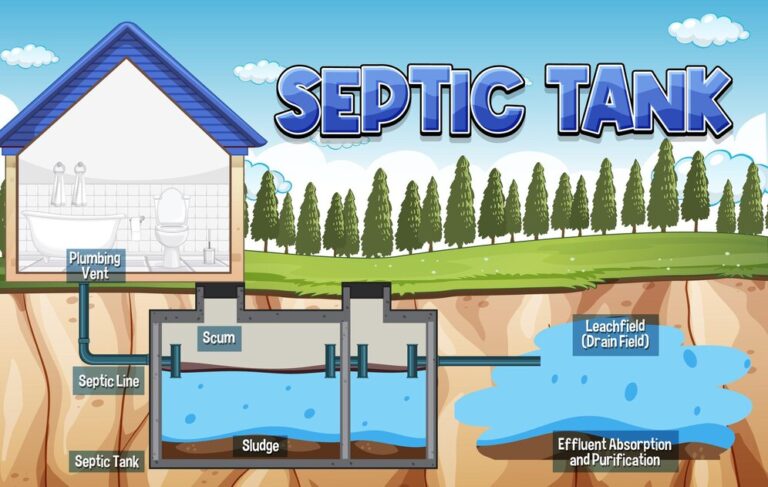10 Unsustainable Things We Do Every Day
Every day, many of our routine choices quietly strain the planet’s resources—often without us even realising it. From the way we shop and travel to how we eat, clean, and consume media, these daily habits, though convenient, often come at a hidden environmental cost. What seems harmless on the surface can snowball into large-scale ecological damage over time.
The good news? Awareness is a powerful first step. This article isn’t about blame—it’s about clarity. By exploring ten commonly overlooked but unsustainable behaviours, we hope to spotlight opportunities for change that are both practical and empowering. You don’t need to be perfect to make a difference—just informed and intentional. Whether you’re a student, a parent, a commuter, or a business leader, small shifts in behaviour can ripple outward, inspiring broader cultural change. Ready to rethink the everyday? Let’s take an honest look at the habits we can no longer afford to ignore.

In This Article
- 1. Overusing Single-Use Plastics
- 2. Wasting Food & Excess Packaging
- 3. Fast Fashion Consumption
- 4. E‑Waste Explosion
- 5. Energy Waste at Home
- 6. Short Car Trips & Transport Habits
- 7. Excessive Water Use
- 8. Eating Meat & Dairy Heavily
- 9. Mindless Consumerism & Package Mania
- 10. Digital Overload & Screen Addiction
- Conclusion: Turning Awareness into Action
1. Overusing Single-Use Plastics
In today’s world, our dependence on single-use plastics—bags, bottles, straws—is suffocating the planet. India’s average annual consumption per person has recently climbed to about 11 kg, with a staggering 77% of that rubbish dumped untreated into landfills or open areas , according to a recent Times of India report. When plastics break down, they don’t vanish—they fragment into microplastics that seep into soils, rivers, oceans, and eventually our bodies. Scientists have detected microplastics in cow’s milk, likely introduced during processing and packaging. These particles can carry unsafe chemicals like heavy metals and hormone disruptors, raising concerns for long-term health.
Plastic is a fossil fuel too—most are made from oil, coal, or gas, and production releases toxins including benzene and ethylene oxide. Worse yet, plastic doesn’t biodegrade; it lasts centuries, making the surge in single-use items particularly damaging.
Actionable advice: Start small, but meaningfully: switch to cloth or paper bags, stainless steel bottles, and bamboo cutlery. Try weekly “no‑plastic” challenges—track progress and share successes. Encourage friends, families, and businesses to own their footprint: post photos of plastic piles, tag local shops, and call out unnecessary packaging. When communities speak up, authorities respond—empowered citizens drive meaningful change.
2. Wasting Food & Excess Packaging
Food waste and packaging chaos are quietly overwhelming our kitchens and trash cans. Globally, we toss out over 1 billion tonnes of food each year—around 20% of what we produce—and households are responsible for about 60% of that loss, according to the UN Environment Programme’s Food Waste Index Report 2024. In the U.S. alone, an average person wastes roughly 181 kg of food every year—that’s nearly 400 pounds—or about 30–40% of the all food supply. That’s not just dollars disappearing; it’s water, land, and energy too.
On top of that, packaging is a major culprit. The EPA reports that packaging makes up around 28% of municipal solid waste, and food packaging often dominates that slice. Most packaging gets used once and thrown away, clogging landfills and contributing to pollution.
So what can you do right now? Shop smart with lists, plan meals, and batch-cook to avoid waste, learn to decode labels (like “sell by” vs “use by”), and try composting scraps. These practical steps, rooted in knowledge and good habits, go a long way toward slowing the food waste and packaging avalanche.
3. Fast Fashion Consumption
Every year, a staggering 92 million tonnes of clothing end up as waste—almost a garbage truck full every second—because of rapid turnover in fast‑fashion trends. It’s even more shocking when we consider that producing just one T‑shirt uses around 2,000 L of water—enough drinking water for one person for over two years . Globally, the fashion industry contributes about 10% of carbon dioxide emissions and generates roughly 20% of the world’s wastewater, largely through dyeing and finishing processes.
Experts say this wasteful system isn’t just bad for the planet—it’s also inefficient and vulnerable. The Ellen MacArthur Foundation estimates that if companies shift to circular business models like renting, repairing, reselling, and recycling, the industry could unlock up to $700 billion in value by 2030. That’s why initiatives like The Fashion ReModel are bringing brands together to redesign systems where clothing and materials circulate longer, instead of being thrown away.
To help break the cycle: buy fewer garments, make what you have last (through mending or swapping), and look into rental or resale options. Extending a T‑shirt’s life by just one extra year can cut down its carbon, water, and waste footprints by about 20–30%. It may seem small, but if everyone did it, the impact would be huge.
4. E‑Waste Explosion
In 2022, the world faced an unprecedented surge in electronic waste: a staggering 62 million tonnes—up 82% since 2010—was generated, yet only about 22 % was formally collected and recycled in an environmentally sound way. That translates to each person discarding between 7 and 16 kg of e‑waste annually, with averages of 7.8 kg globally and up to 17.6 kg in Europe.
This imbalance means nearly 80 % of discarded electronics are unaccounted for, often winding up in landfills or informal recycling operations where toxic materials like mercury and cadmium seep into soil and water. Improper handling also contributes significant CO₂ emissions, especially when devices containing refrigerants or batteries are dumped or burned.
The December 2024 UN Global E‑Waste Monitor report sounded a warning: current disposal trends are spiralling out of control, with e‑waste production growing nearly five times faster than formal recycling efforts. It predicts that e‑waste could reach 82 million tonnes by 2030, and recycling rates are projected to dip to around 20 % if no strong policy shifts occur. Experts and environmental authorities emphasise that extending device lifespans, supporting repair cafés, and using certified recycling and donation channels are essential steps. These practices not only reduce hazards and greenhouse gas output but also curb resource waste, aligning with the circular economy that the UN advocates.
5. Energy Waste at Home
Everyday habits at home can stealthily drain energy—and money—without us noticing. Leaving lights on or appliances running, or over‑air‑conditioning rooms, quietly adds up, especially since most electricity still comes from fossil fuels. According to the U.S. Energy Information Administration, heating and cooling alone make up more than half of a typical home’s power usage.
Studies back this up: researchers at San Jose State University found that behaviour, not just technology, is the top reason homes waste energy—and that nudging small changes could cut waste by 2–17%. That means switching off lights when you leave a room, raising the AC a few degrees, or unplugging devices can really help.
Practical fixes are easy to adopt: swap out old bulbs for smart LEDs—these use up to 90% less power than incandescent ones, according to the U.S. Department of Energy and ENERGY STAR. Schedule usage with timers or smart plugs, so devices only run when needed. Booking a home energy audit—many utilities offer low-cost or free visits—can uncover hidden leaks, inefficient appliances, or drafts. And remember those idle chargers or TVs in standby mode? Unplugging them—or using a smart power strip—can eliminate “phantom load,” which quietly adds to your electricity bill.
6. Short Car Trips & Transport Habits
Every short car ride contributes far more to emissions than it may seem. The EPA estimates that trips under one mile amount to around 10 billion vehicle miles annually in the U.S. alone—and swapping just half of those for walking or biking could cut CO₂ by about 2 million metric tons each year, equivalent to removing nearly 400,000 cars from the road—plus save hundreds of millions in fuel and maintenance costs.
Beyond carbon savings, active commuting is a win for mental and physical health. A 2024 study across Spain found that walkers and cyclists report lower stress, healthier body mass index, improved mood, cardiovascular fitness, and community connection. In New York, researchers observed significantly reduced psychological stress among those walking to work.
Psychology shows that daily active commuting not only boosts mood but creates a feeling of belonging—seeing neighbours, greeting fellow walkers or cyclists builds social bonds. To make a real shift: designate a “no‑drive zone” (e.g., around your home), try public transit, or organise a carpool. Test setting a radius—say a mile—and commit to walking or biking within it. Try a week without driving—notice the energy spike, money saved, and examine how your body and community feel more connected.
7. Excessive Water Use
In our daily routines—washing dishes, showering, cooking—we unknowingly waste significant amounts of freshwater. Although domestic use accounts for just 12% of global freshwater withdrawals, nearly half of it is lost to inefficiencies, particularly during bathing and cleaning, according to the UN World Water Development Report.
Experts warn that regions already prone to drought—like parts of Africa, the Middle East, and South Asia—face mounting pressure on their dwindling water supplies . NASA data shows how freshwater reserves have dropped dramatically since 2015, signalling that our planet is entering a prolonged arid phase.
Fortunately, easy, science-backed fixes exist: installing low-flow showerheads and faucet aerators can reduce water use by 30–50 %, and dual-flush or low-flush toilets curb usage per flush dramatically. Harvesting rainwater in barrels or cisterns offers an excellent way to repurpose naturally supplied water for cooking, cleaning, and garden use.
Learn More: 12 Best Green Resolutions for Every Month
8. Eating Meat & Dairy Heavily
Eating lots of meat—especially red meat—and dairy carries a surprisingly heavy environmental cost. For instance, a landmark 2018 study analysing nearly 39,000 farms across 119 countries found that beef and lamb produce far more greenhouse gases (GHGs) per kilogram than other foods—beef emits around 25 kg CO₂‑eq per kg of protein, whereas plant-based foods emit 10–50 times less on average. Worldwide, meat and dairy products together are responsible for roughly 12–14.5% of global GHG emissions, mainly from methane and nitrous oxide released during production and land use.
Nutrition experts emphasise that shifting toward plant-centred diets isn’t just better for the planet—it’s usually healthier too. Rhiannon Lambert, a registered nutritionist, recommends starting with one or two meat-free days a week, gradually increasing plant-rich meals using staples like legumes, whole grains, nuts, seeds, fruits, and vegetables.
To make this shift practical, try simple swaps: use beans or lentils in place of ground meat in sauces, enjoy veggie-packed bowls, or choose plant-based milks and yoghurts. Even small changes—like skipping red meat a couple of times a week—can significantly cut your carbon footprint while adding more fibre, vitamins, and minerals to your diet.
9. Mindless Consumerism & Package Mania
According to the United Nations at the 2025 World Circular Economy Forum, our current “take‑make‑waste” system is being challenged by global experts who argue for regenerative, circular models instead. Yet, mindless consumerism and “package mania” still dominate—people buying without need and drowning in paper, plastic, and cardboard. McKinsey reports that about 80% of consumer packaging is never recycled, representing nearly $2.6 trillion in lost materials each year.
Studies on e‑commerce packaging highlight oversized boxes and non‑renewable materials, stretching sustainability efforts thin. In the food and beverage sector, the EU’s review notes that although regulations exist, plastic packaging volumes are rising faster than recycling rates. Experts now recommend shifting shopping habits—not relying solely on recycling, but embracing reuse, repair, and refusal.
So, what can individuals do? Start with a mindful shopping checklist: ask “Do I need this?”, opt for minimal‑packaging items, choose unpackaged or bulk goods, and prefer digital versions of media over physical ones. Follow reuse principles—borrow, mend, refill, and return. And consider digital alternatives to physical items, whether e‑books, streaming, or digital invoices.
10. Digital Overload & Screen Addiction
Our smartphones, tablets, and laptops—as useful as they are—have a hidden environmental and mental cost. Data centres powering these devices are major energy hogs. In the U.S., they consumed about 176 TWh in 2023, roughly 4.4% of national electricity, and their demand is projected to double by the end of the decade.
Globally, AI-driven usage could raise data centre power needs to a staggering 200–900 TWh by 2030. Many still rely on fossil fuels, with carbon intensities up to 50% higher than average.
On the human side, digital platforms are engineered to hook us. Features like infinite scroll, push alerts, and personalised feeds use persuasive design rooted in behavioural psychology, driving endless screen time and addictive behaviours. One study found that 25% of participants had multiple problematic smartphone use behaviours directly linked to these design tactics.
Thankfully, experts are championing “ethical digital minimalism” and humane design. Features such as break reminders, time tracking, and intentional friction in interfaces are gaining popularity.
To regain balance and reduce impact—both environmental and mental, try these simple habits:
- Create screen‑free zones, such as mealtimes or bedrooms.
- Audit your devices: repair old phones instead of upgrading, and discard fewer electronics.
- Use apps that lock usage after set time limits, or choose devices designed to resist persuasive triggers.
With small steps, we can trim energy waste, cut e‑waste, and reclaim healthier relationships with screens, without losing what matters.
Learn More: 30 Sustainability Examples in Everyday Life
Conclusion: Turning Awareness into Action
Recognising unsustainable habits isn’t about guilt—it’s about empowerment. The ripple effect of small, conscious decisions can be transformative, not just for our planet but for our lives. Every mindful choice—skipping plastic, walking more, eating thoughtfully—contributes to a culture of care.
“We don’t need a handful of people doing zero waste perfectly. We need millions doing it imperfectly.” – Anne-Marie Bonneau, Zero Waste Chef
Let this guide be your spark for change. Start with one habit. Then another. Our collective future depends on it.







